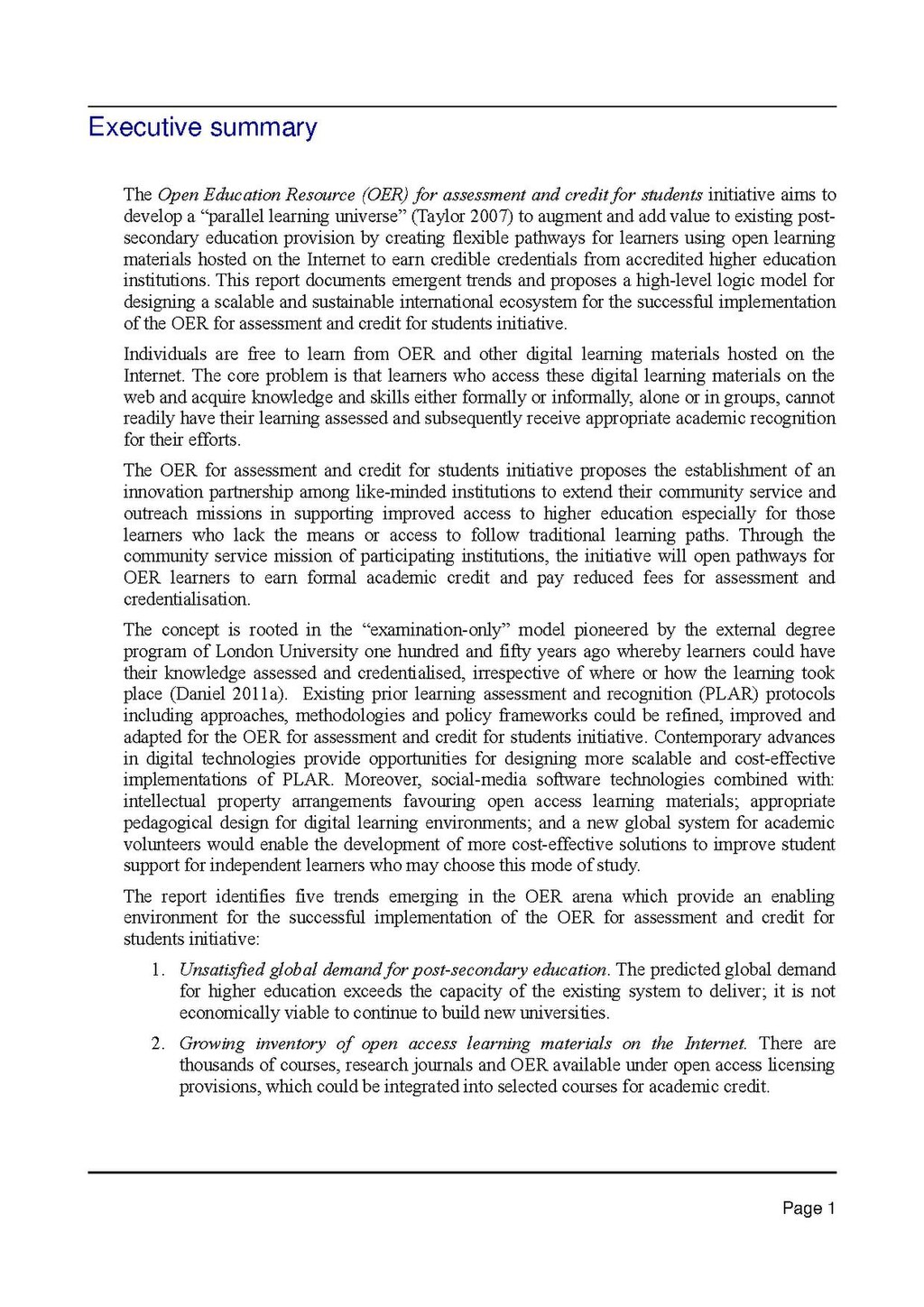Executive summary
The Open Education Resource (OER) for assessment and credit for students initiative aims to develop a "parallel learning universe" (Taylor 2007) to augment and add value to existing postsecondary education provision by creating flexible pathways for learners using open learning materials hosted on the Internet to earn credible credentials from accredited higher education institutions. This report documents emergent trends and proposes a high-level logic model for designing a scalable and sustainable international ecosystem for the successful implementation of the OER for assessment and credit for students initiative.
Individuals are free to learn from OER and other digital learning materials hosted on the Internet. The core problem is that learners who access these digital learning materials on the web and acquire knowledge and skills either formally or informally, alone or in groups, cannot readily have their learning assessed and subsequently receive appropriate academic recognition for their efforts.
The OER for assessment and credit for students initiative proposes the establishment of an innovation partnership among like-minded institutions to extend their community service and outreach missions in supporting improved access to higher education especially for those learners who lack the means or access to follow traditional learning paths. Through the community service mission of participating institutions, the initiative will open pathways for OER learners to earn formal academic credit and pay reduced fees for assessment and credentialisation.
The concept is rooted in the "examination-only" model pioneered by the external degree program of London University one hundred and fifty years ago whereby learners could have their knowledge assessed and credentialised, irrespective of where or how the learning took place (Daniel 2011a). Existing prior learning assessment and recognition (PLAR) protocols including approaches, methodologies and policy frameworks could be refined, improved and adapted for the OER for assessment and credit for students initiative. Contemporary advances in digital technologies provide opportunities for designing more scalable and cost-effective implementations of PLAR. Moreover, social-media software technologies combined with: intellectual property arrangements favouring open access learning materials; appropriate pedagogical design for digital learning environments; and a new global system for academic volunteers would enable the development of more cost-effective solutions to improve student support for independent learners who may choose this mode of study.
The report identifies five trends emerging in the OER arena which provide an enabling environment for the successful implementation of the OER for assessment and credit for students initiative:
- Unsatisfied global demand for post-secondary education. The predicted global demand for higher education exceeds the capacity of the existing system to deliver; it is not economically viable to continue to build new universities.
- Growing inventory of open access learning materials on the Internet. There are thousands of courses, research journals and OER available under open access licensing provisions, which could be integrated into selected courses for academic credit.
